Testing the quality of different materials at different levels of relative humidity and temperature
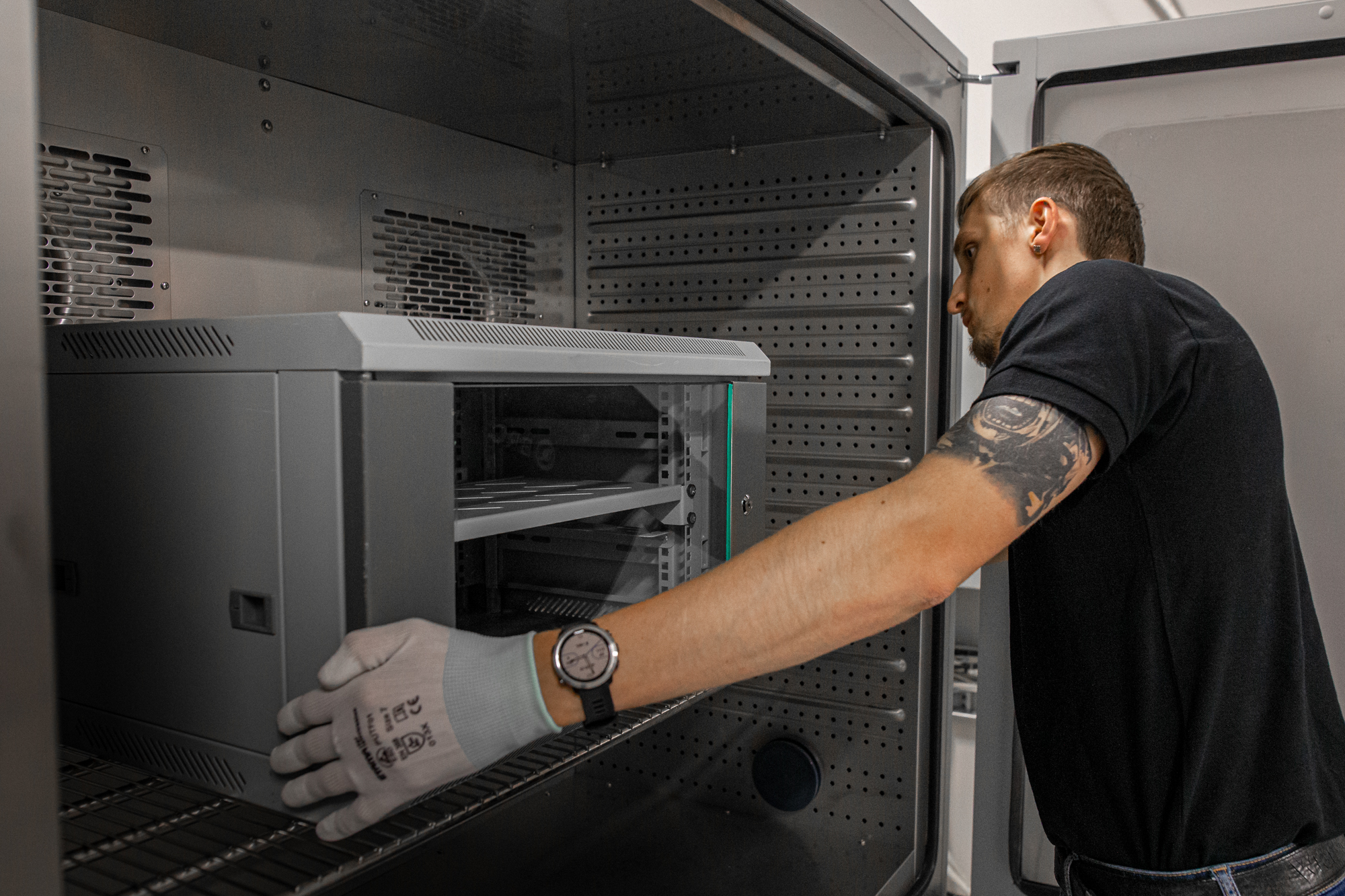
- Volume of camera 734 l
- Internal camera: 1200x1020x600 mm
- Temperature range (without humidity): -40 to +180
- Temperature range (with humidity): +10 to +95; moisture from 10 to 98%
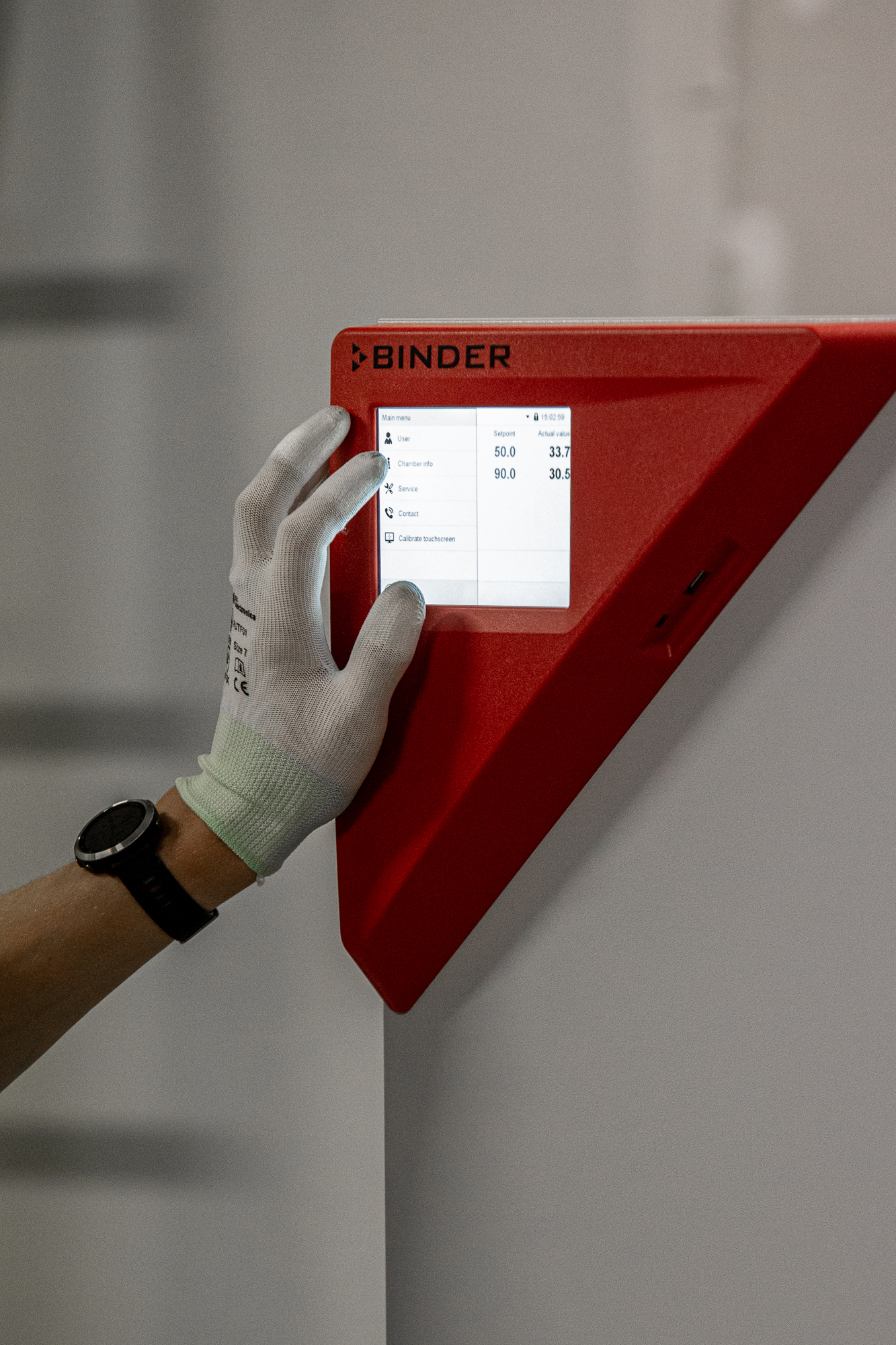
Test of resistance of different coatings
- Coating thickness: over 60 microns
- Cutter size: 2 mm
- Number of cutters: 6
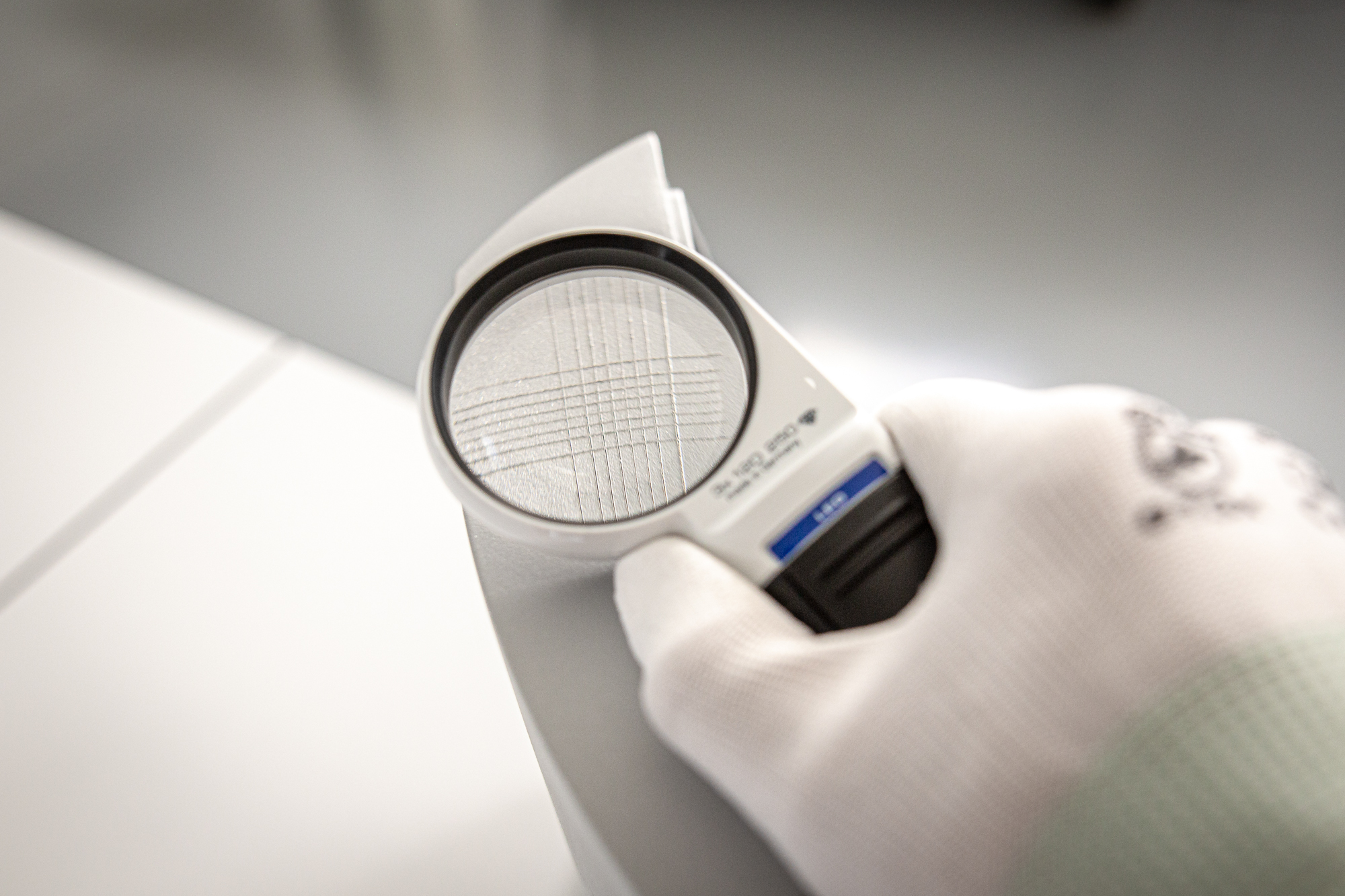
IP code designation
| The first number of the IP Code - protection against the ingress of solid foreign objects | |||
|---|---|---|---|
| Number | Protection against the ingress of solid foreign objects, whose diameter | Description | Test available in our laboratory |
| 0 | – | Without protection | – |
| 1 | ≥ 50mm | Protection against the access with back of a hand. | Yes |
| 2 | ≥ 12.5mm | Protection against the access with finger. | Yes |
| 3 | ≥ 2.5mm | Protection against the access with a tool, cable | Yes |
| 4 | ≥ 1.0mm | Protection against the access with a wire, ingress of screws | Yes |
| 5 | Dust-protected | Protection against the ingress of dust. Small amount of dust may get inside the enclosure, but it shall not interfere the operation of protected device. Completely protected against the access to hazardous parts of the device | No |
| 6 | Dust-tight | Dust shall not get inside the enclosure. Completely protected against the access to hazardous parts of the device | No |
| The second number of the IP Code - protection against the ingress of water | |||
|---|---|---|---|
| Number | Protection against | Description | Test available in our laboratory |
| 0 | – | Without protection | – |
| 1 | Vertically falling drops | Vertically falling drops shall not interfere the operation of protected device | (Yes) now No |
| 2 | Vertically falling drops when enclosure tilted up to 15° | Vertically falling drops and drops falling at any angle up to 15° on either side of the vertical shall not interfere the operation of protected device | (Yes) now No |
| 3 | Spraying water | Protection against the rain. Water sprayed at any angle up to 60° on either side of the vertical shall not interfere the operation of protected device | Yes |
| 4 | Splashing water | Water splashed from any direction against the enclosure shall not interfere the operation of protected device | Yes |
| 5 | Water jets | Enclosure is protected against the water jets from any direction. Shall not interfere the operation of protected device | Yes |
| 6 | Powerful water jets | Enclosure is protected against the powerful water jets from any direction. Shall not interfere the operation of protected device | Yes |
| 7 | Temporary immersion in water (up to 1m at 30 min.) | Temporary immersion shall not interfere the operation of protected device. The device is not provided for continuous operation under water. | Yes |
| 8 | Continuous immersion in water (deeper than 1m at time > 30 min.) | The device is provided for the continuous use under water. | Yes |
IP Code (International Protecting Marking) – marking in accordance with IEC 60529 standard, which describes the degree of ingress protection provided by enclosure. This code has the following form IP(XX) where X is number or symbol, if the protection level is not defined by standard. The number can be followed by one or two letters, which gives additional information. First number/symbol describes protection level against the ingress of solid foreign objects, the second number/symbol - protection level against the ingress of water.
For instance, in accordance with this classification (IEC 60529) the maximum protection level is marked by IP68 code – dust-tight enclosure, which can withstand continuous immersion under pressure. The maximum protection level by specific code is IP69-K: high-temperature high-pressure washing.
The table below describes and summarizes IP code numbers and corresponding protection levels, as well as the capabilities of our laboratory to provide the test.
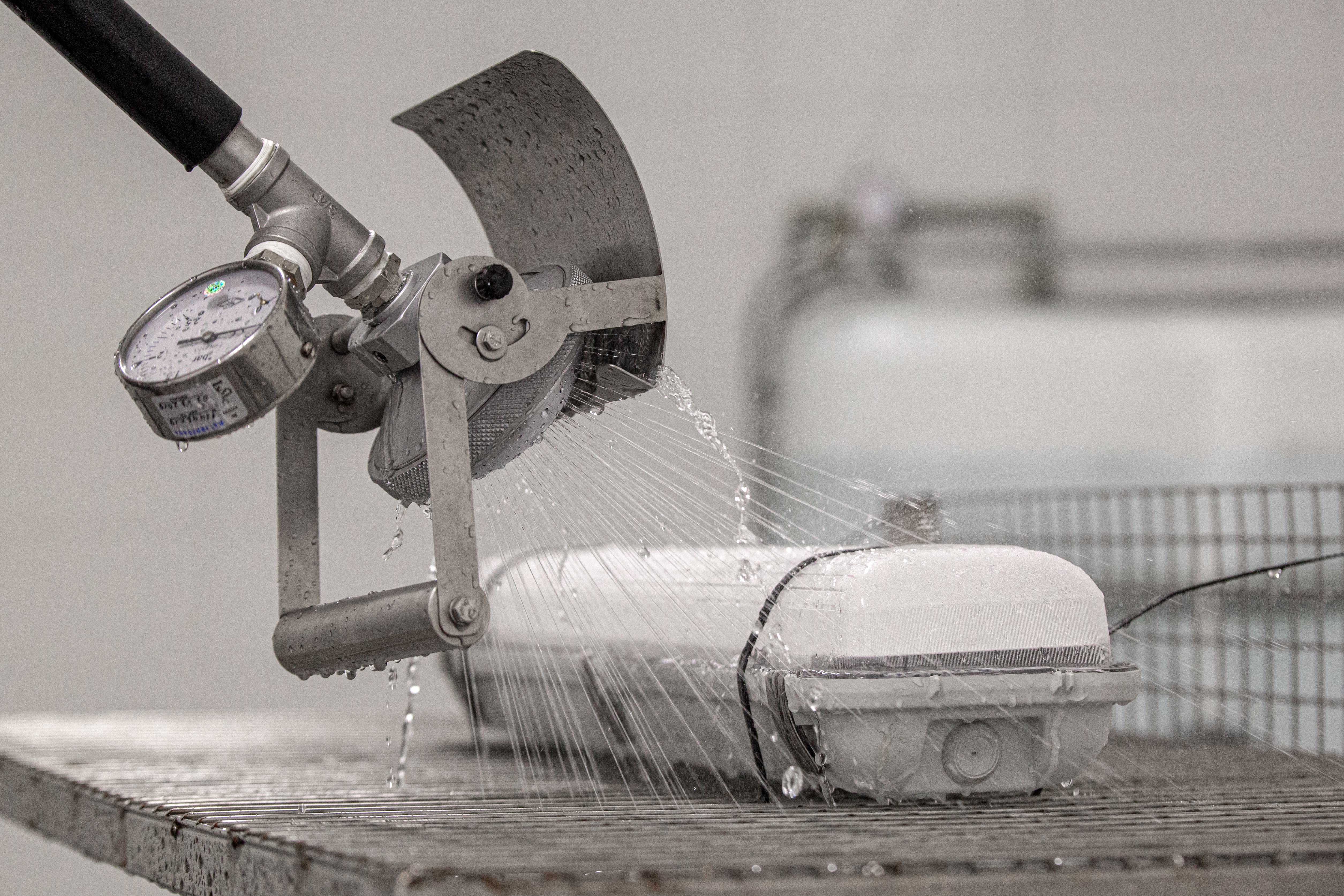
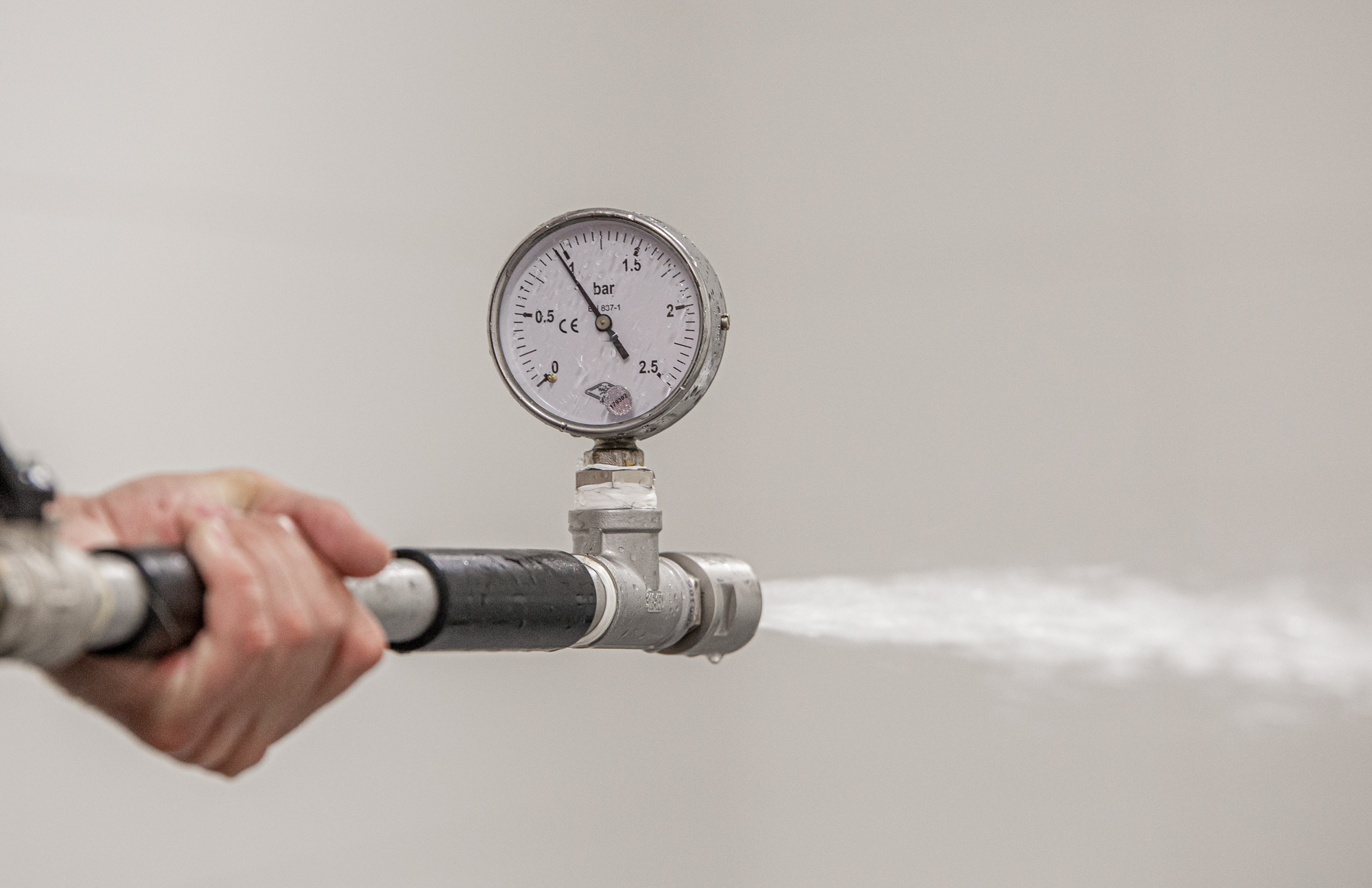
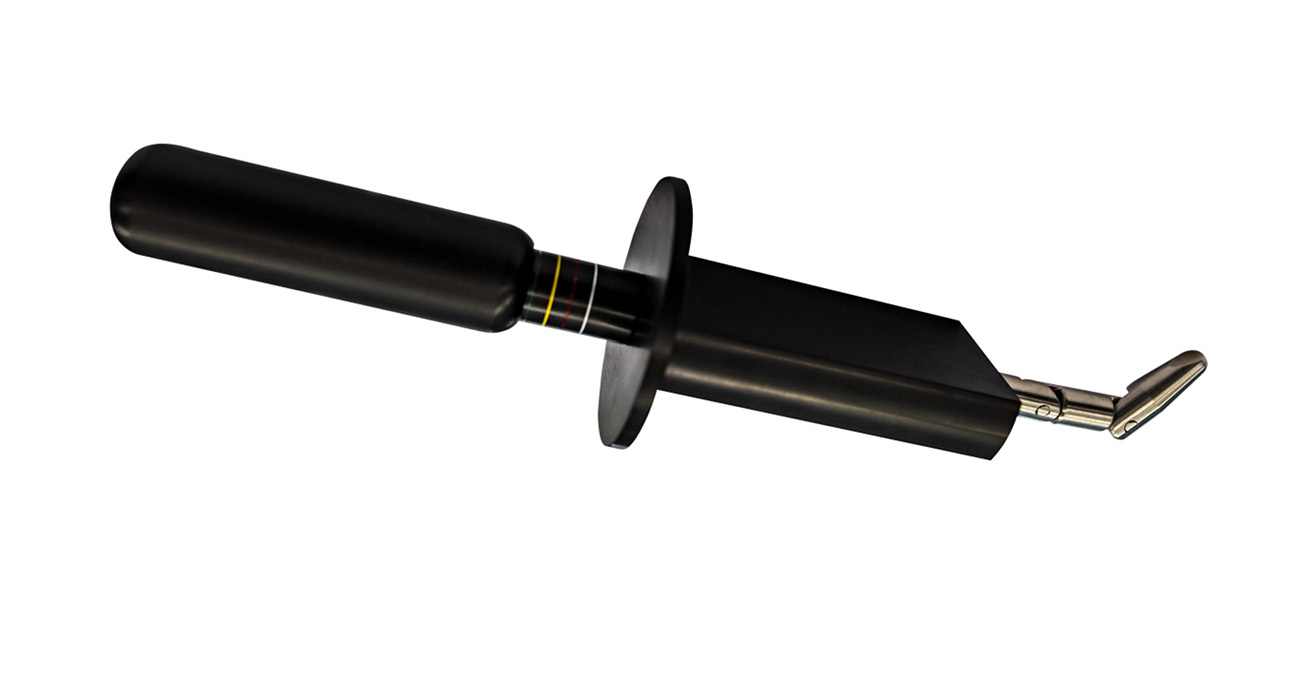
IK Code – marking in accordance with international standard IEC 62262, which describes the degree of protection provided by enclosure for electric equipment against external mechanical impacts. This code has the following form IK(XX) where XX is number in range from 00 to 10, which describes the protection level in ascending order.
The table below describes and summarizes IK code numbers and corresponding protection levels, as well as the capabilities of our laboratory to provide the test.
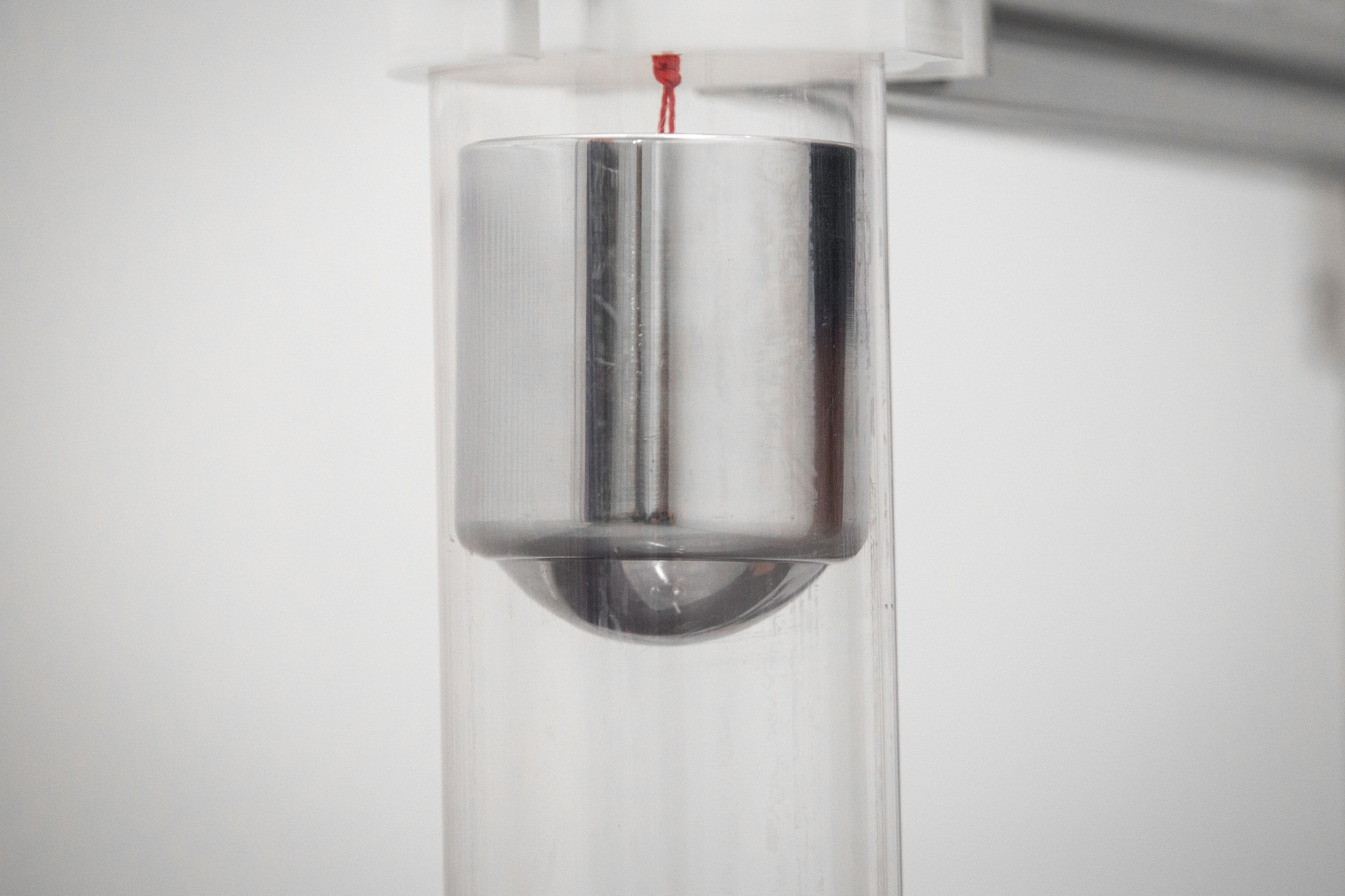
IK code designation
| Number | Impact energy | Test conditions | Test available in our laboratory |
|---|---|---|---|
| 00 | – | Not defined | – |
| 01 | 0.15J | 0.25kg striking element, 56mm height | Yes |
| 02 | 0.2J | 0.25kg striking element, 80mm height | Yes |
| 03 | 0.35J | 0.25kg striking element, 140mm height | Yes |
| 04 | 0.5J | 0.25kg striking element, 200mm height | Yes |
| 05 | 0.7J | 0.25kg striking element, 280mm height | Yes |
| 06 | 1J | 0.25kg striking element, 400mm height | Yes |
| 07 | 2J | 0.5kg striking element, 400mm height | Yes |
| 08 | 5J | 1.7kg striking element, 300mm height | Yes |
| 09 | 10J | 5kg striking element, 200mm height | Yes |
| 10 | 20J | 5kg striking element, 400mm height | Yes |
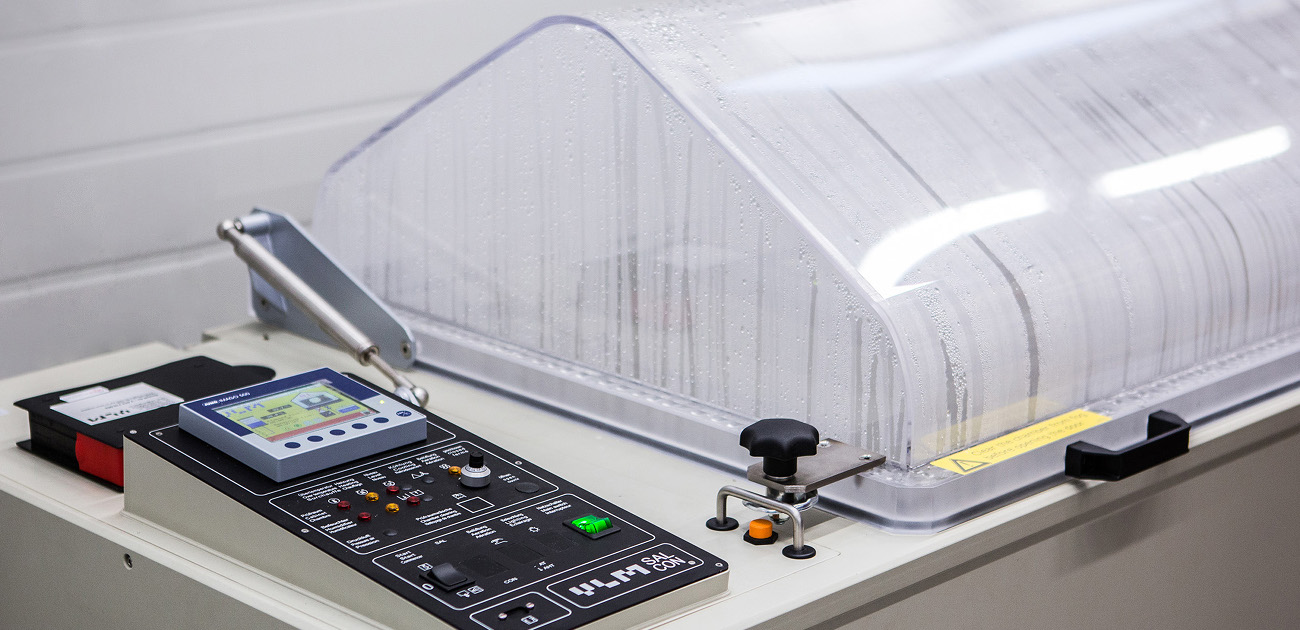
Test types
Most commonly used test is neutral salt spray (NSS) test, when 5% sodium chloride solution is sprayed in chamber. Also, it is possible to use another type solutions for the tests – acetic acid (acetic salt spray - ASS) or acetic acid with copper chloride (copper-accelerated acetic acid-salt spray CASS), which are more suitable for testing of decorative coatings.
Corrosion test chamber
Salt spray test is standardized testing approach to verify capability of protecting coatings to withstand against the corrosion. Coatings protect different metal (steel, aluminum, brass, bronze, coper ant etc.) parts against the corrosion. In usual conditions protective coatings are quite sustained against the corrosion, therefore was developed accelerated testing approach. After the exposure in salt spray fog and specified temperature, the specimens are verified on the presence of corrosion products – oxides. Duration of the test depends on the sustainability of the protective coating – the more sustained coating, the longer period it must withstand salt spray test conditions without appearance of corrosion.
Test equipment is sealed chamber, where salt fog is generated by special nozzle by spraying sodium chloride solution. The constant environment conditions are maintained in the chamber – given temperature and salt fog concentration. In our laboratory we are using CCT 1000-TL I salt spray chamber manufactured by German company VLM GmbH. By using this equipment, we are capable conducting not only simple salt spray tests, but also cyclic corrosion tests. In separate tests it is possible to use it as climatic chamber.
The dimensions of the chamber are the following (mm): 1400 x 710 x 660.
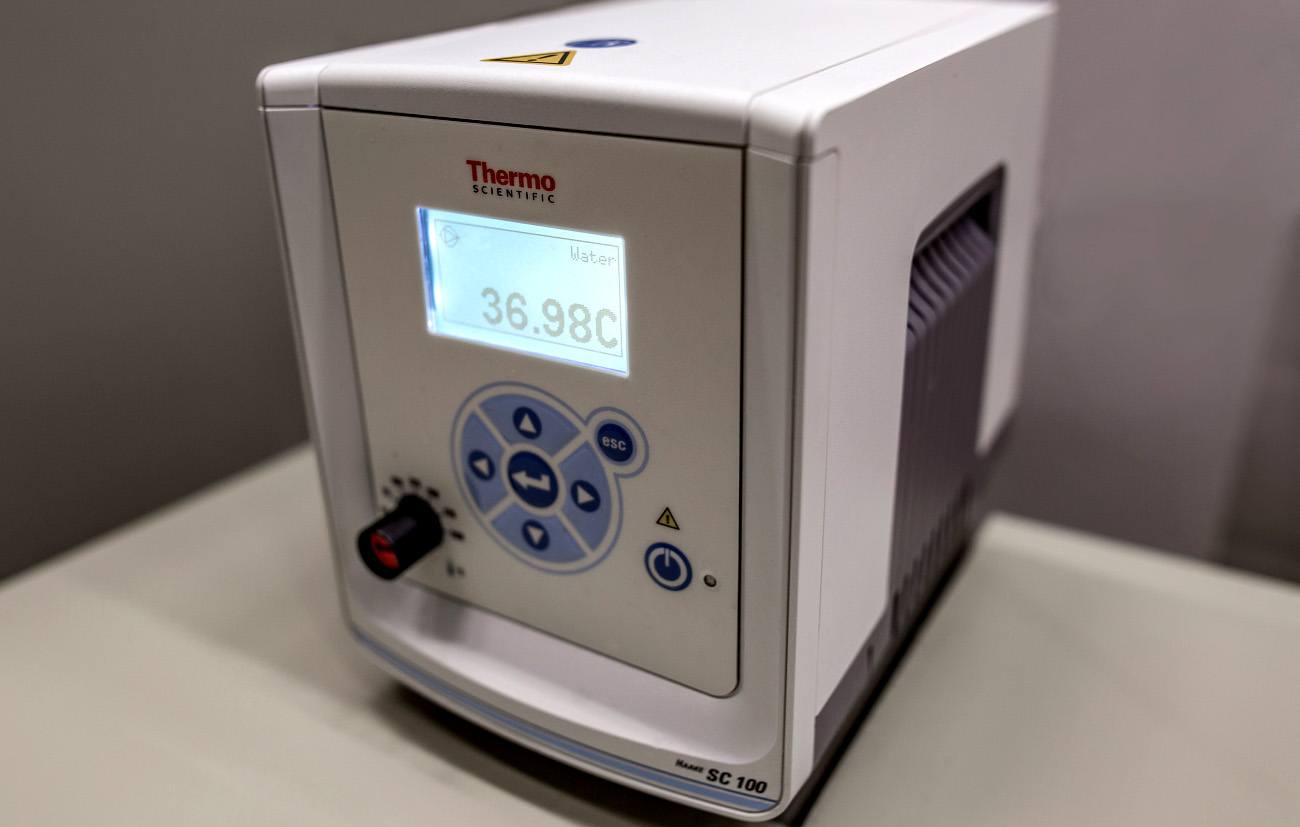
Machu bath is device for accelerated corrosion tests in accordance with Qualicoat (quality label for liquid and powder organic coatings on aluminium for architectural applications) specification.
Machu test
According to Qualicoat the test is carried out on extruded sections of AA 6060 or AA 6063 aluminium alloys. The specimens must have at least 70x70mm of flat coated surface. Specimens are scratched with special scratching tool, then placed in bath. The test is carried out for 48 hours. The lab provides a report of visual control of specimens as the result of the test (The requirement to fulfil in accordance with Qualicoat specification is: no infiltration exceeding 0.5 mm on both sides of the scratch).
At the customer’s request, it is possible to carry out the test in accordance with another specification.
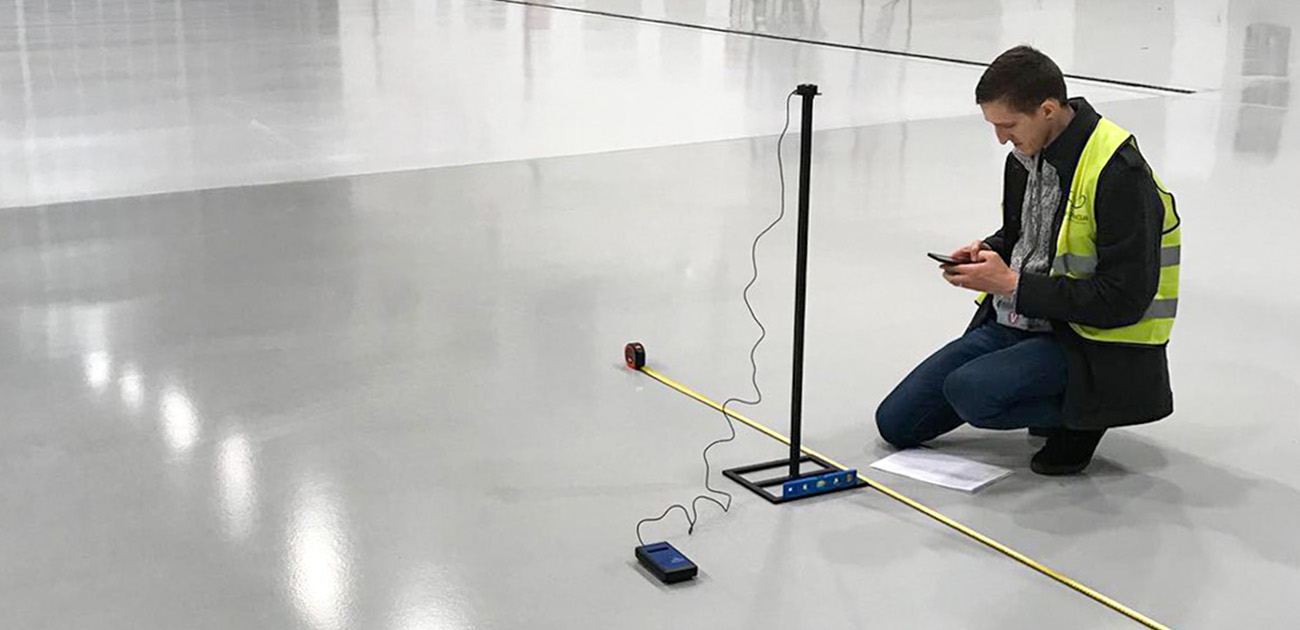
Illuminance measurements
Luminaries indoors and outdoors have to provide optimal lighting, which can be determined by implementing illuminance measurements. We offer to perform accredited measurements in accordance with LVS EN 12464-1:2011 and LVS EN 12464-2:2014 standards and the Cabinet of Ministers Regulations No. 359 (Labour Protection Requirements at Work Places).
The obtained results will provide an understanding about the average illuminance in the premise, view the minimum, maximum and total illuminance status in each spot of the premise as well.
Testing equipment are high-quality LMT Lichtmesstechnik GmbH lux meters.
Measurements are performed at a definite height, measuring the premise according to the grid principle - calculated depending on the size of the chosen location.
